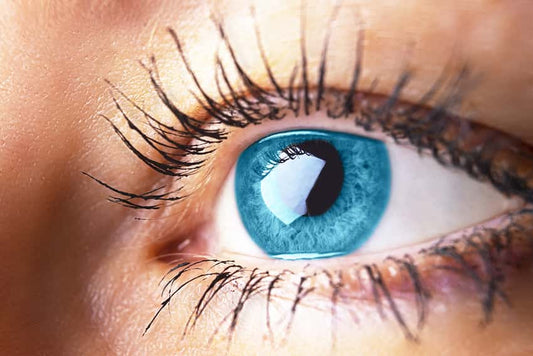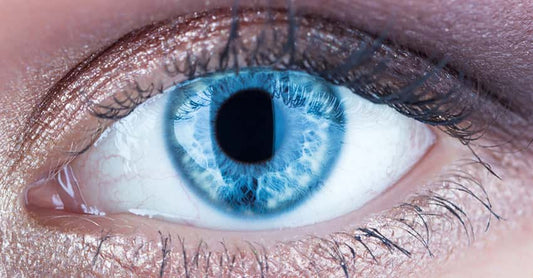Zeaxanthin and astaxanthin are not the most well-known ingredients, but they are the dark horses of the antioxidant world and are slowly gaining popularity for their powerful benefits to our health.
Both are a type of pigment responsible for the bright color of some fruit, vegetables, and seafood. Their health benefits are attributed to their antioxidant properties, which enable them to fight cell damage and inflammation.
Taking zeaxanthin and astaxanthin supplements has been linked to better eye health and lower disease risk. But which is best?
We’re here to help and are pitting them head to head to examine their individual benefits. In this article, learn more about these mysterious substances and find out which one wins the battle!
What is Zeaxanthin?
Zeaxanthin belongs to a family of pigments known as carotenoids. It is known for its distinctive, vibrant yellow color and is found in certain foods such as algae, fruits and vegetables, and eggs.
Carotenoids are an essential part of our diet because they act as antioxidants linked to several health benefits. They help protect the body’s cells from damage, slow aging and reduce the risk for chronic diseases such as cancer.
Zeaxanthin is found in particularly high concentrations in the retina in the eye. Here, it helps protect the eye from oxidation, light-induced damage, and the development of eye diseases.
The benefits of zeaxanthin on eye health have been extensively studied. Find out more below.
Benefits of Zeaxanthin
Age-related macular degeneration (AMD)
Oxidative stress is caused by an excess of highly reactive molecules called free radicals. These trigger inflammation in the body and damage cells, both of which contribute to developing diseases such as age-related macular degeneration, a common eye disorder that causes vision loss.
Zeaxanthanin’s antioxidant properties help protect the eye from AMD by preventing oxidative stress and reducing inflammation 1.
Cataracts
Cataracts cause blurry vision and are common as we get older. Oxidative stress and inflammation in the eye are major contributors to their development.
According to one study, zeaxanthin supplementation can help slow the formation of cataracts 2.
Diabetic retinopathy
Diabetic retinopathy is seen in people with diabetes and is caused by damage to blood vessels in the retina, often as a result of oxidative stress.
Zeaxanthin’s antioxidant properties can help prevent damage to the retina and protect against vision impairment 3.
Uveitis
Uveitis is a term used to describe inflammation of certain parts of the eye that can lead to vision loss. One study found that zeaxanthin can help slow this process by regulating oxidative stress-induced inflammation in the eye 4.
What is Astaxanthin?
Astaxanthin is another carotenoid with potent antioxidant effects. It has a red/orange pigment and is found mostly in seafood such as salmon, trout, shellfish, and algae.
Astaxanthin’s antioxidant properties are so powerful that it is known as the “king of carotenoids”! It not only helps protect the eyes from damage but provides numerous other benefits to health.
Benefits of Astaxanthin
Skin health
Astaxanthin can be applied topically to the skin, but when taken as a supplement, it can help aid skin health from the inside out. According to research, combining both lines of attack can help smooth wrinkles, improve skin moisture and reduce signs of age spots 5.
Cancer protection
Oxidative stress and inflammation are major risk factors for the development of various cancers. According to one study, astaxanthin supplementation provides short and long-term benefits for treating cancer, thanks to its antioxidant properties 6.
Joint health
Many joint-related conditions, such as arthritis, are associated with increased inflammation and damage to joint connective tissues caused by free radicals. Astaxanthin shows promise to help treat conditions like osteoarthritis by reducing oxidative stress 7.
Heart health
There is a small amount of research into claims that astaxanthin can benefit heart health. Some evidence suggests it may reduce blood pressure by improving artery wall thickness and increasing artery elasticity 8.
Which is Better?
In relation to eye health, a vast amount of research supports the use of zeaxanthin for improving vision and protecting against eye diseases. So this one has our vote.
However, astaxanthin has a much more extensive range of health benefits, so it is also a great option, depending on your requirements.
In our opinion, combining both is even better, as it doubles the antioxidant capacity for even further eye protection! Plus, you get added extra health benefits of astaxanthin.
Performance Lab Vision includes both of these carotenoids to protect against eye damage, vision loss, and eye diseases. Take it daily for long-range eye health and sharper eyesight.

Conclusion
The battle of the antioxidants is over! Let’s quickly recap.
Zeaxanthin is a type of carotenoid pigment that gives fruit, vegetables, and some other foods a vibrant yellow/orange color. It is important for our health because it has potent antioxidant properties, especially beneficial to eye health, where it is found in the highest concentrations.
Zeaxanthin helps protect against oxidative damage, reduces inflammation in the eyes, and slows the progression of eye diseases such as AMD, cataracts, uveitis, and diabetic retinopathy.
Astaxanthin is also a carotenoid but is found in seafood. It has more of a red pigment and is also an extremely powerful antioxidant.
In regards to which is best, zeaxanthin definitely has the most extensively studied benefits to eye health, so it takes the first spot. However, astaxanthin not only benefits the eyes but also offers a larger range of health benefits.
Take both together for the ultimate combination to fight eye damage and vision impairment and for better long-range eye health.
References
- Jia, Yu-Ping, et al. "The pharmacological effects of lutein and zeaxanthin on visual disorders and cognition diseases." Molecules 22.4 (2017): 610.
- Jia, Yu-Ping, et al. "The pharmacological effects of lutein and zeaxanthin on visual disorders and cognition diseases." Molecules 22.4 (2017): 610.
- Xue, Chunyan, et al. "Management of ocular diseases using lutein and zeaxanthin: what have we learned from experimental animal studies?." Journal of Ophthalmology2015 (2015).
- Tominaga, Kumi, et al. "Cosmetic benefits of astaxanthin on humans subjects." Acta Biochimica Polonica 59.1 (2012).
- Chao, Shih-Chun, et al. "Effects of lutein and zeaxanthin on LPS-induced secretion of IL-8 by uveal melanocytes and relevant signal pathways." Journal of Ophthalmology 2015 (2015).
- Teo, Ivy Tuang Ngo, et al. "Antiproliferation and induction of cell death of Phaffia rhodozyma (Xanthophyllomyces dendrorhous) extract fermented by brewer malt waste on breast cancer cells." International journal of molecular medicine 16.5 (2005): 931-936.
- Sun, Kai, et al. "Astaxanthin protects against osteoarthritis via Nrf2: A guardian of cartilage homeostasis." Aging (Albany NY)11.22 (2019): 10513.
- Hussein, Ghazi, et al. "Antihypertensive potential and mechanism of action of astaxanthin: III. Antioxidant and histopathological effects in spontaneously hypertensive rats." Biological and Pharmaceutical Bulletin 29.4 (2006): 684-688.















